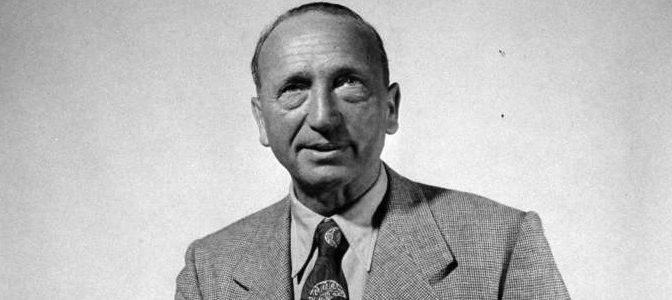
Toby Miller of Bums on Seats sits down with writer and journalist Adam Feinstein to discuss the legendary filmmaker, Michael Curtiz.
TM – Why do you think it is that Michael Curtiz, despite his long lost of remarkable films, doesn’t seems as lauded as directors such as John Ford and John Huston.
AF – I think it’s because he was too good at too many different genres. He could produce masterpiece dramas like ‘Casablanca’, but he could also do brilliant musicals like ‘Yankee Doodle Dandy’ and the famous swashbucklers he made with Errol Flynn. He made tough gangster films. And with each of these different types of films he was superb: he gave them pace and flair.; he made sure the dialogue flew. He once famously replied, when asked if his characters were believable by saying he’d make the film move so fast nobody would notice if they weren’t. So I think he was so good at so many different types of movie that people just believe he can’t be good at any.
TM – And he spent most of his career at Warner Brothers?
AF – Yes, he worked for the bulk of his Hollywood career at Warner Brothers. He did what he was told to a certain extent, but he also had the flair to annoy the producers and go over budget, to use extraordinary angles and unusual plot diversions.
TM – Just in 1942, the year he made ‘Casablanca’, he directed two other great films. Film direction in the Studio System of Warner Brothers seems more production line than filmmaking.
AF – All the studios did that, but Warner Brothers were especially famous for churning out movie after movie. They especially liked films that had social interest, which I believe was another match between Curtiz and the studio. He was Hungarian. He was born in 1886 in Budapest, and he had made a lot of silent films in Europe before being discovered by Harry Warner. He was brought over to Hollywood and very quickly was producing several films a year. Warner Brothers knew they had found somebody who could make the sort of films they wanted to make. He certainly wasn’t an easy director to get on with, but he could spot talent – he made Doris Day a star – and he tended to keep the same crew around him for film after film.
TM – You’ve brought ‘The Adventures of Robin Hood’ and ‘Casablanca’ to the Film Festival, but what’s the third film?
AF – A film that has slipped through the net somewhat. It’s called ‘The Breaking Point’ and is – well not a remake of ‘To Have and Have Not’, but another version of the Hemingway novel. It stars John Garfield and Patricia Neal, and I think it’s closer to the original novel in spirit than the Howard Hawk’s version. Hemingway himself said it was his favourite of the movie adaptations. A beautiful and complex film that I’m proud to be presenting at the Festival.
TM – As you’ve mentioned, his work ranged across many, many genres. Curtiz was fascinated by all manner of stories – but are there themes he returns to?
AF – That’s a good question. A lot of people do think that with Michael Curtiz that there is no central theme, that there was no typical Curtiz touch, but I think there are identifiable themes that run through many of his films. One of them is the ”reluctant rebel’, the rebel despite himself, the rebel who starts the film saying “I stick my neck out for no one”, like Rick does in ‘Casablanca’ – but of course he does. I find a lot of the male protagonists in Curtiz’s film to be extremely touching because they have this combination of toughness and a golden heart underneath it all. This combination of an external toughness masking a soft heart is somethingthat I believe is also true of Curtiz himself.
TM – But he was also a very great director of women; a lot of the men in his films are not really that macho. We think of the half dozen or so swashbucklers he made with Errol Flynn – the typical adventuring male character, but in many of his other films Curtiz’s men are troubled and uncertain, and it’s the female lead who is the one who has to carry and support him. So in that sense I think the Curtiz was a more modern director than some people may think.

